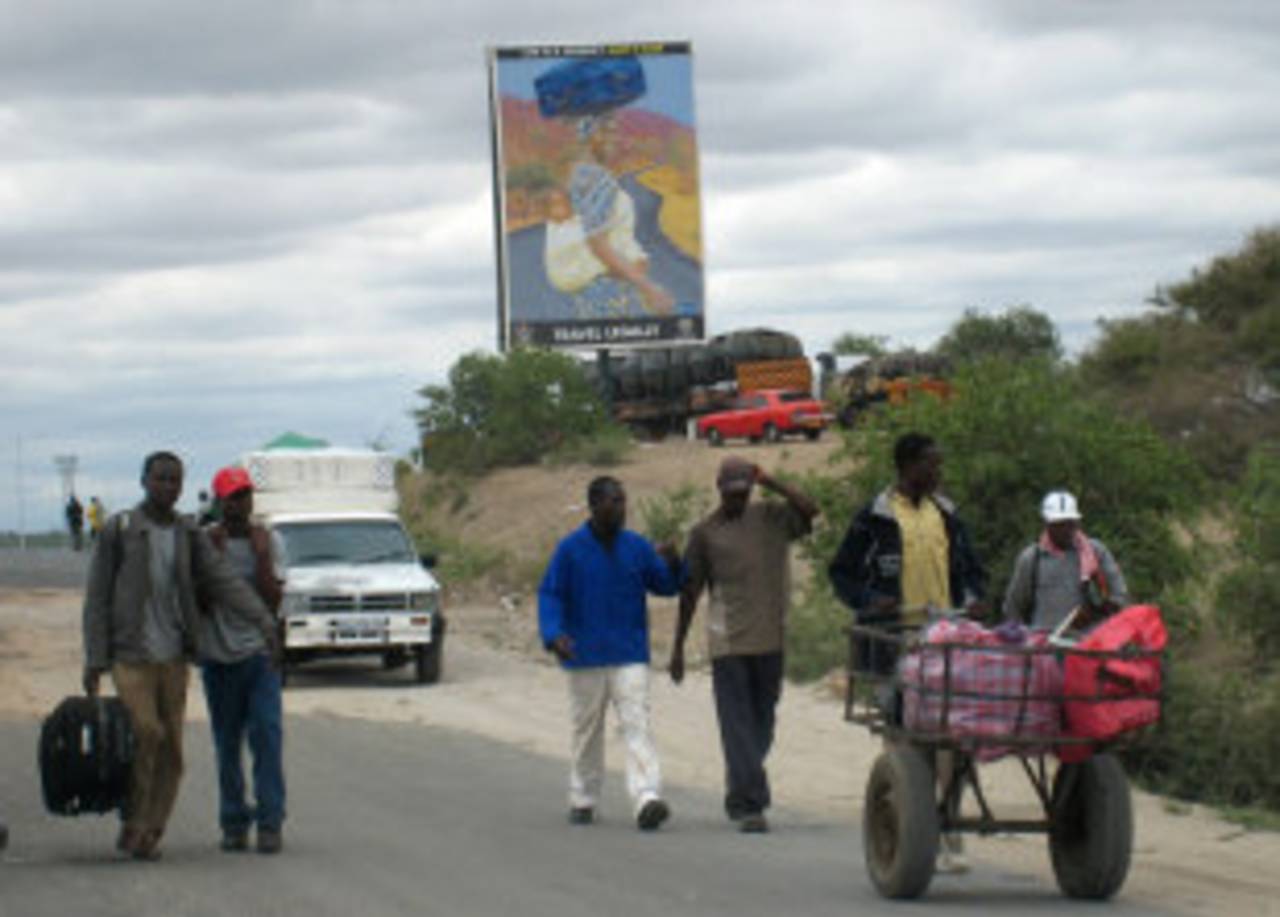South Africa to Zimbabwe, by road
Reports during last year's Christmas holidays revealed 19,000 people and 1000 trucks and buses were travelling across the Beitbridge border every day
Firdose Moonda
25-Feb-2013

Zimbabweans return to Beitbridge after Christmas shopping in South African border town Musina • AFP
Reports during last year's Christmas holidays revealed 19,000 people and 1000 trucks and buses were travelling across the Beitbridge border every day. It isn't that busy at other times of year but the South Africa-Zimbabwe route is still one of the most-travelled and least-desirable roads to journey on, and after experiencing it for myself, I know why.
I opted to go by bus, instead of air, because the bus ticket to Bulawayo from Johannesburg is more than 10 times cheaper than a return flight, even though Bulawayo is closer to South Africa than Harare. For just R370 (US$52) one-way, a seat on a fairly luxurious and well reputed bus, the Greyhound, can be bought. The chairs are roomy, the air-conditioning works, they play a range of cheesy, z-grade comedies featuring the likes of Eddie Murphy and they stop several times along the way, sometimes for too long.
During the day, the bus winds through the Northern Provinces of South Africa, the part of the country that reminds city-dwellers like me how beautiful the land really is. Johannesburg, like any other world city, is not the real Africa, but the farmlands, baobab trees and vast horizon of that road is. The only sign of human inhabitation is in Polokwane, formerly known as Pietersburg. The quaint town is home to the Peter Mokaba Stadium, which hosted four football World Cup matches in 2010 and can be seen from the road.
Three hours from there, through the northern-most town of Musina is Beitbridge, where the stories are colourful and the atmosphere cold. South African immigration officials at this point are obviously overworked and badly harangued but do their best to process people as quickly as possible. The first place we had to go was a tent, but one of the administrators split the line in half and sent the rest of us to a small, brown brick building so the queue would move faster.
The scene makes quite a photograph and I had taken many. I took shots of the lines of people, the small building, the exasperated man on the other side of the counter, and I would have been able to publish some had my phone not been nicked from my bag seconds after I put it there. When I reached in again to take another picture, it was gone. As we got back on the bus, the driver warned us that people targeted travellers on that side of the border, the South African side, and that we should make sure we were extra vigilant. As a South African, I already knew that. Still, the information came too late.
For a few brief minutes we wandered through no-man's land, between posts and then disembarked again, on the Zimbabwean side. The difference was immense. The road leading up to the South African border was wide, the one going into Zimbabwe far narrower. The South African building, albeit cramped, was well taken care of, the Zimbabwean one far less maintained and far more chaotic. There were also many more people because the wait on the other side is far longer.
Immigration is a complicated process of filling in forms but customs in the real tangled knot. Because there are no scanners, every bag must be opened and searched. In 90 minutes everyone on my bus had been looked at but, as we went through, the people on the bus in front of us, which looked rickety, were still standing waiting to be searched.
"We call those buses chicken buses," a woman told me. "They are very cheap and very, very dangerous. The officials think the people on there are carrying things they shouldn't be carrying into Zimbabwe, so the search takes longer, there is a lot of risk of things being stolen and they take a very long time to get into Bulawayo."
We had crossed into Zimbabwe at 18:30 and were due to arrive in Bulawayo at 20:15. The driver informed us that it would be another four-and-half hours until we got to Bulawayo. He was not lying. After 270 minutes of dodging potholes and landing in too many, of stopping to let off people along the way, refuelling, dropping off parcels and other unscheduled interruptions Bulawayo was finally in sight.
I have not been here before, but the hospitality I was greeted with was all too familiar. The guesthouse taxi driver had waited at the stop for over two hours for the bus to arrive, he took a detour to the only open restaurant in town (ironically, an outlet of the South African chicken franchise Nandos) and when I reached the gorgeous colonial home where I will be spending the next few days, the owner welcomed me warmly. I doubt many of my fellow travellers on the bus would have been received in this way, which made me feel a little guilty having experienced their journey with them.
Firdose Moonda is ESPNcricinfo's South Africa correspondent